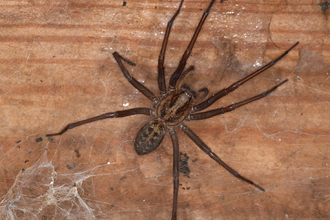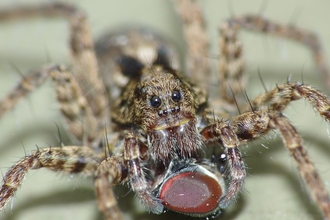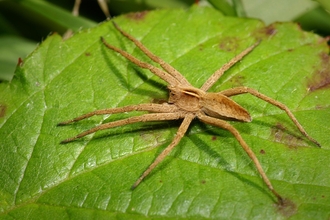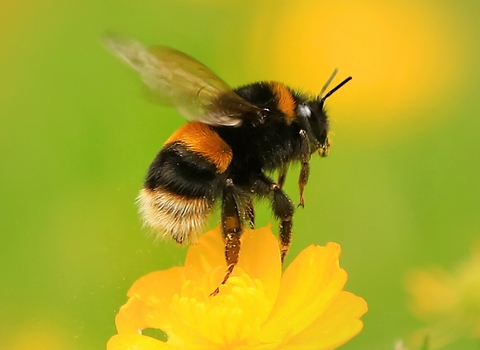False widow spider ©Jane Adams
False widow spider ©Jane Adams
False widow spider © Jane Adams
Noble false widow spider ©Wendy Carter
False widow spider
False widow spiders are often the subject of unflattering headlines, but in reality they're unlikely to bite humans.
Scientific name
Steatoda nobilisWhen to see
Throughout the year, but most often seen between July and November.Species information
Category
Statistics
Size: usually up to 14mm (10mm in males) body length, with a leg span that covers a fifty pence piece.Habitats
About
There are three very similar species of false widow spider that are likely to be found in or around our homes: Steatoda bipunctata (known as the rabbit hutch spider), Steatoda grossa (known as the cupboard spider) and Steatoda nobilis (known as the noble false widow).The noble false widow is the largest of these three species, with males typically growing to body lengths of up to 10mm and females up to 14mm. Noble false widows are not native to the UK, but are thought to have arrived from the Canary Islands in banana boxes in the late 1800s. Populations became established along the south coast and have since spread north, likely aided in their expansion by global warming. The other two species are both native to the UK.
False widow spiders often appear in news stories about spider bites, typically in early autumn. However, confirmed cases of false widow bites are rare. Only the two larger species of false widow, the cupboard spider and the noble false widow, are likely to be able to bite through human skin at all. The spiders are not aggressive towards people, and generally don’t bite unless roughly handled; most recorded bites occur because of people accidentally touching a spider which then reacts defensively.
In the extremely rare confirmed cases where a noble false widow has bitten someone, the bite has been compared to a wasp sting. In even rarer cases, the bite may cause a person to feel unwell for a short time.
If you think you have been bitten and you are concerned about the bite, you can find guidance on the NHS website: www.nhs.uk/conditions/insect-bites-and-stings
How to identify
Noble false widows are the largest of the three false widow species likely to be found near homes. The front section of their body is dark brown, as are the legs. The abdomen (the large, oval-shaped rear part of the body) can be variable, with patterns of cream and dark brown marks (sometimes described as skull-shaped) though often with very few markings at all.Spiders can be difficult to identify and many of the claims of false widow spiders often relate to a different species altogether.




